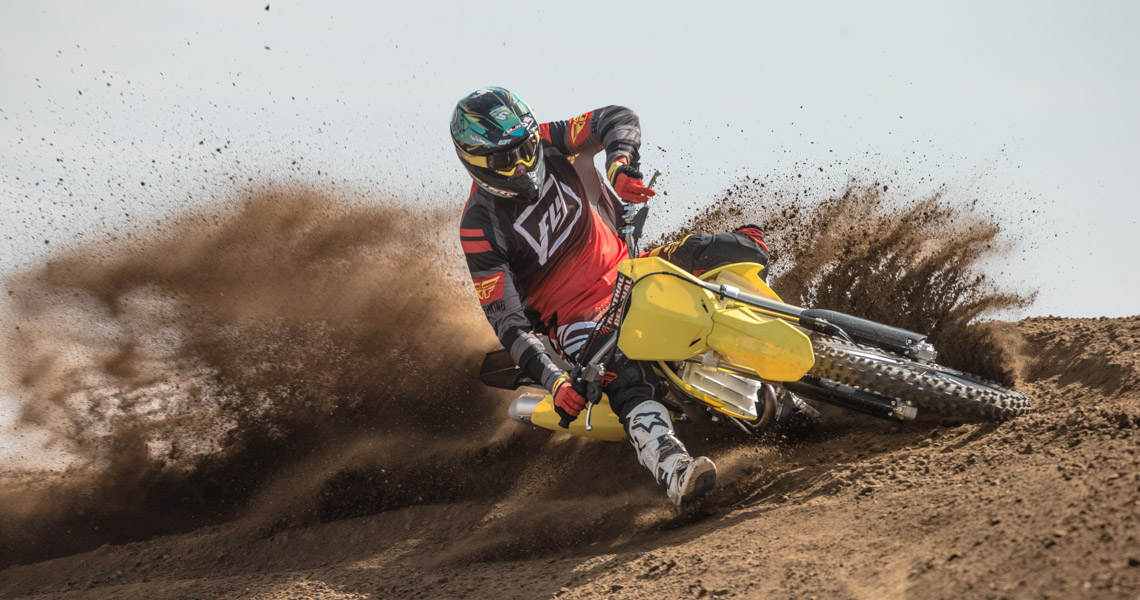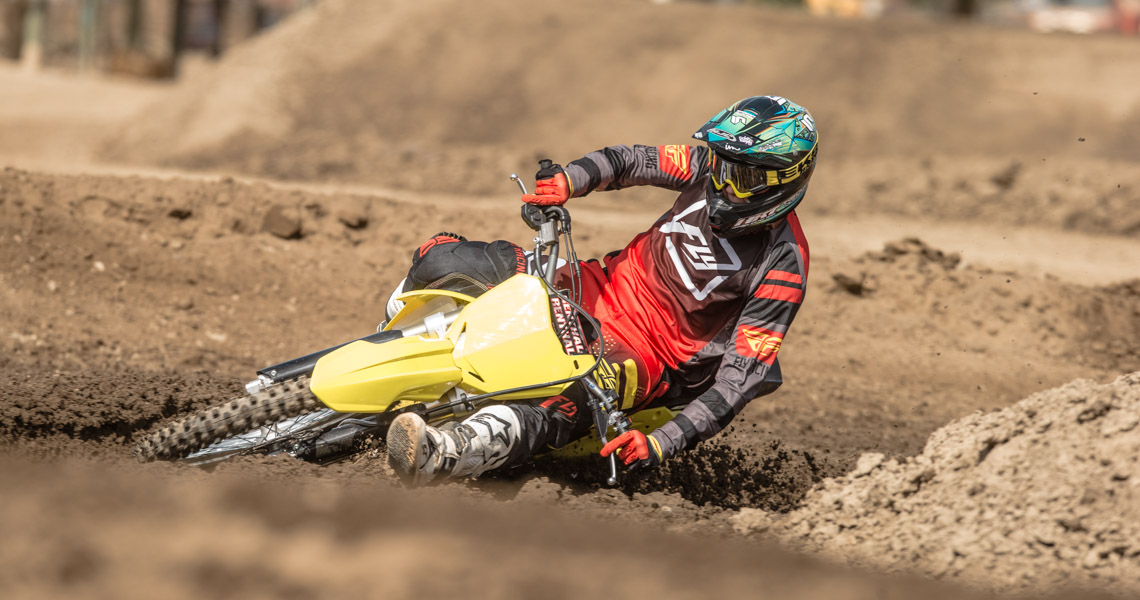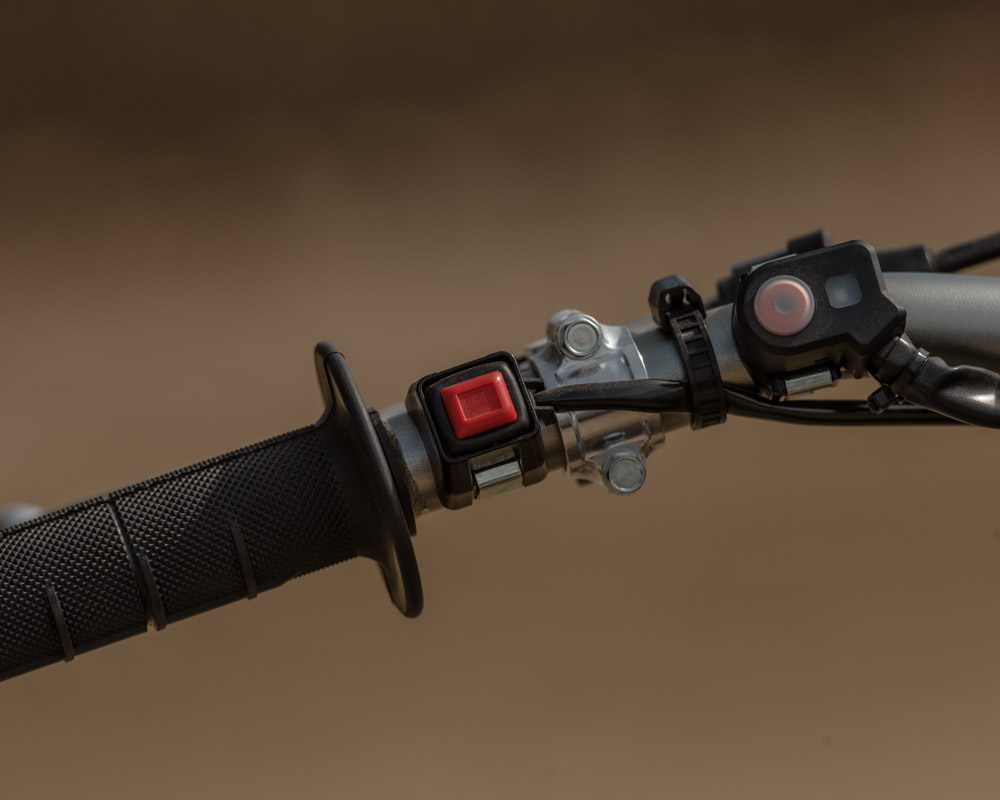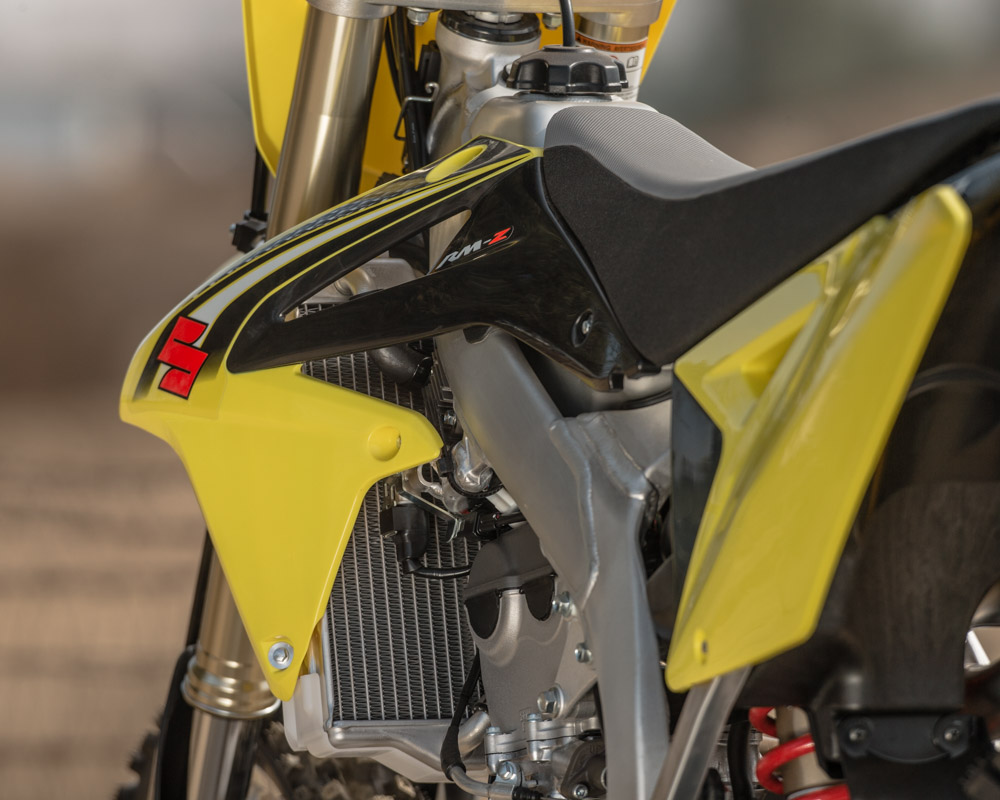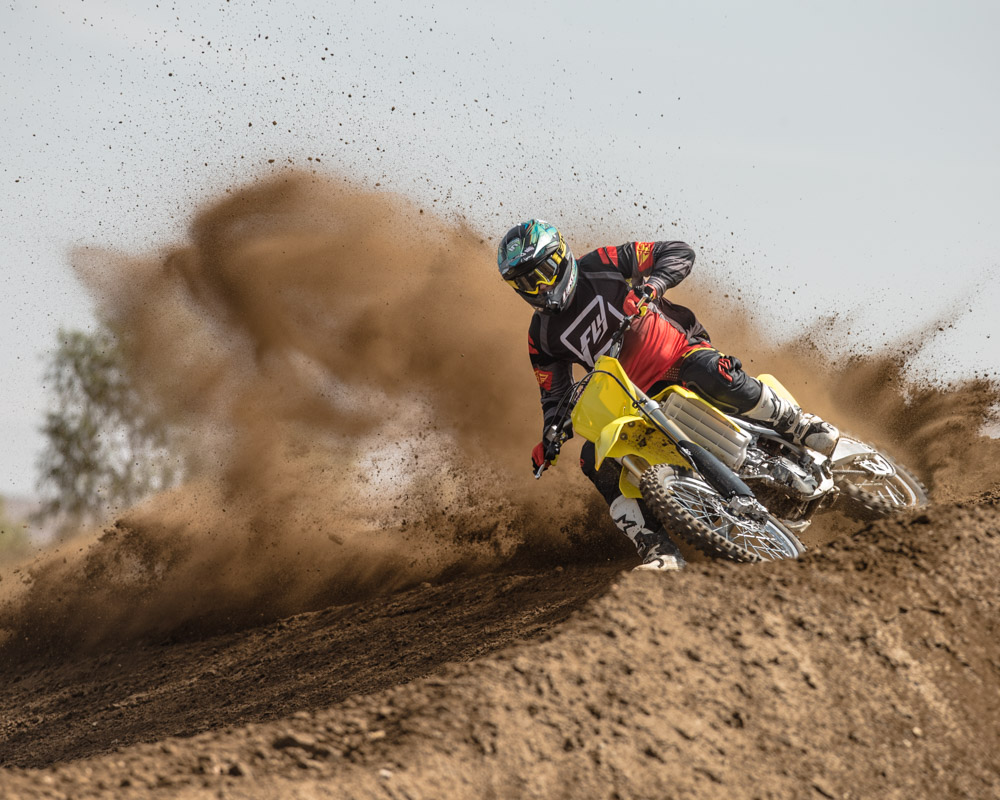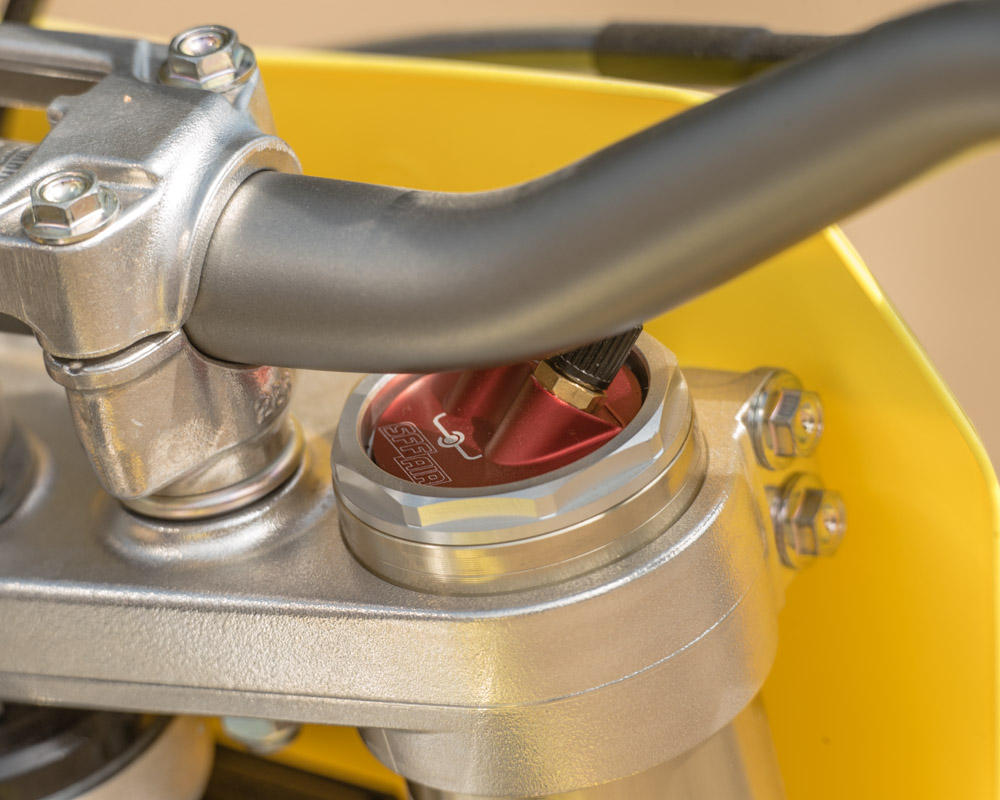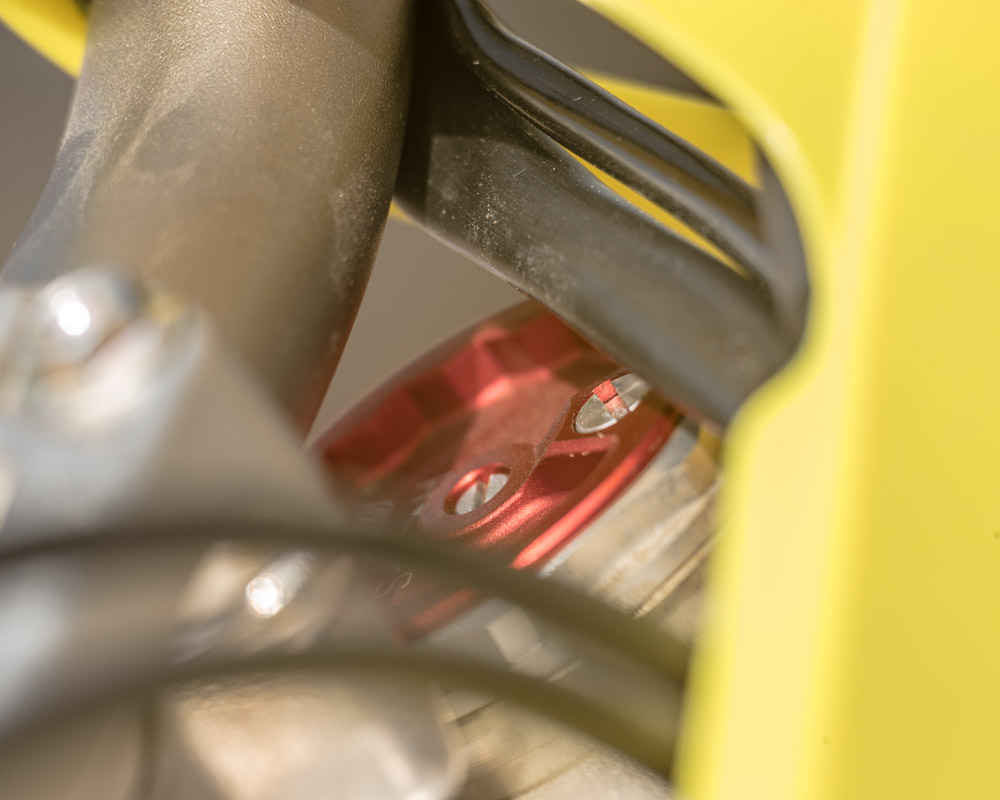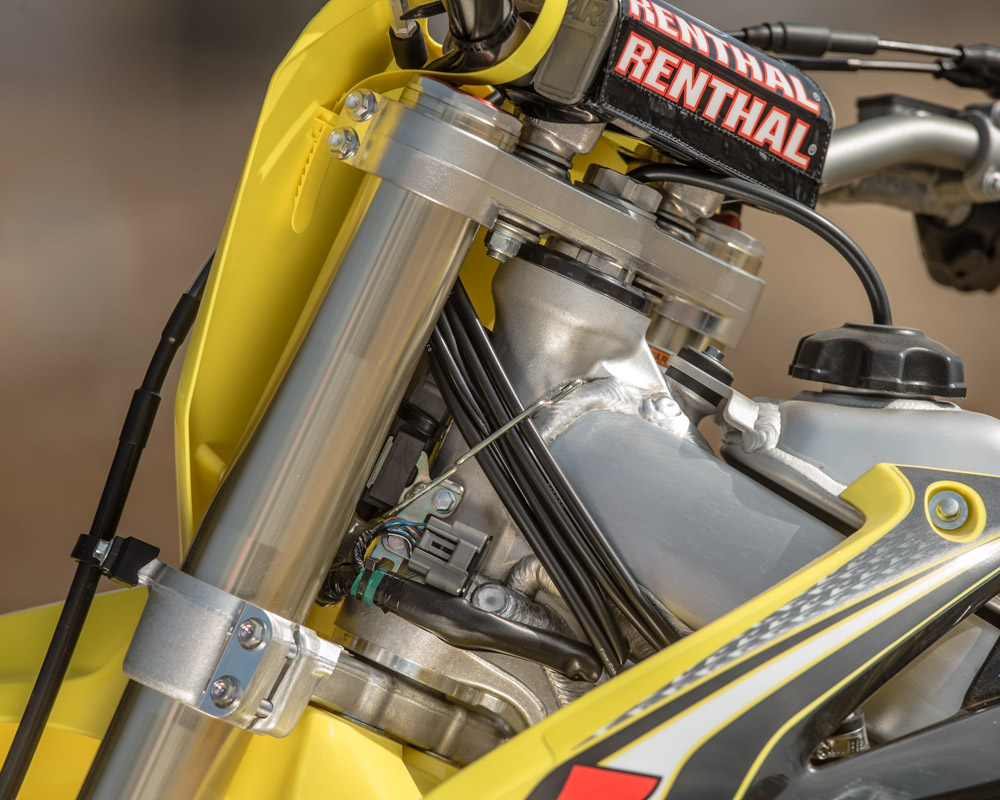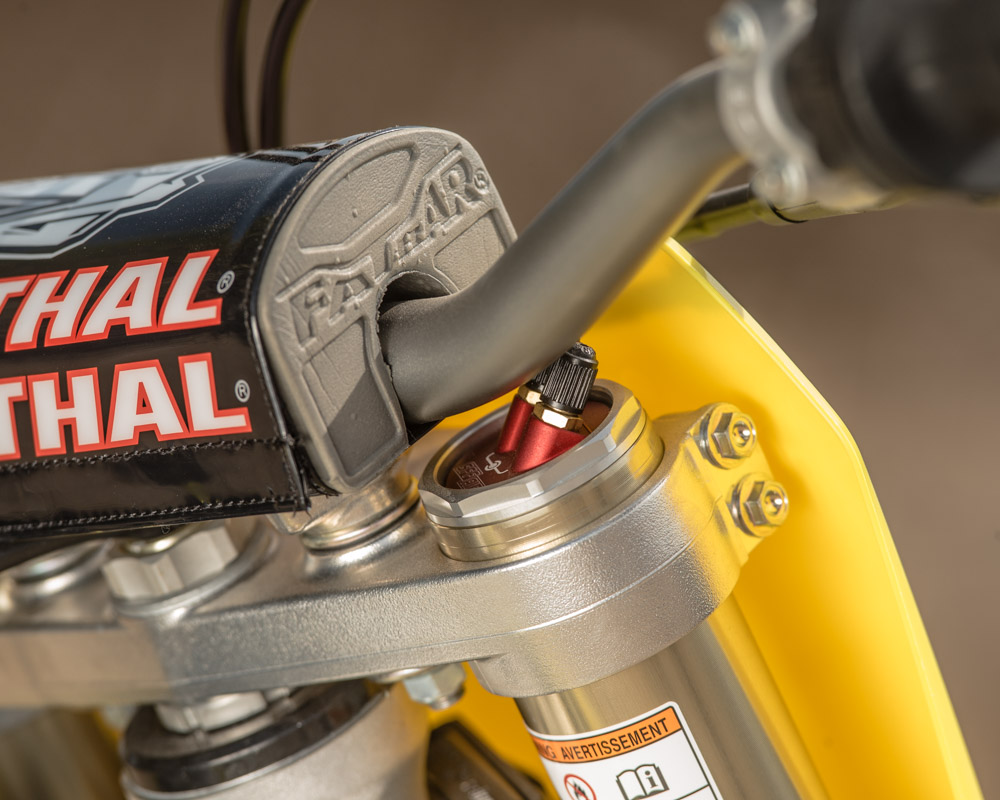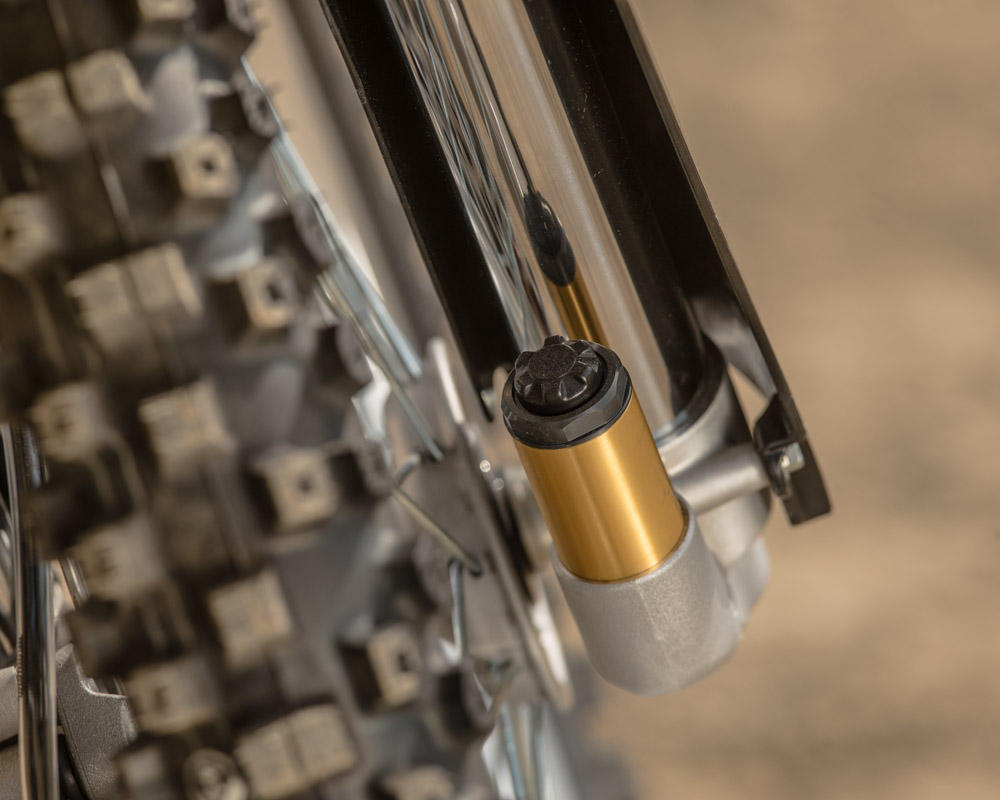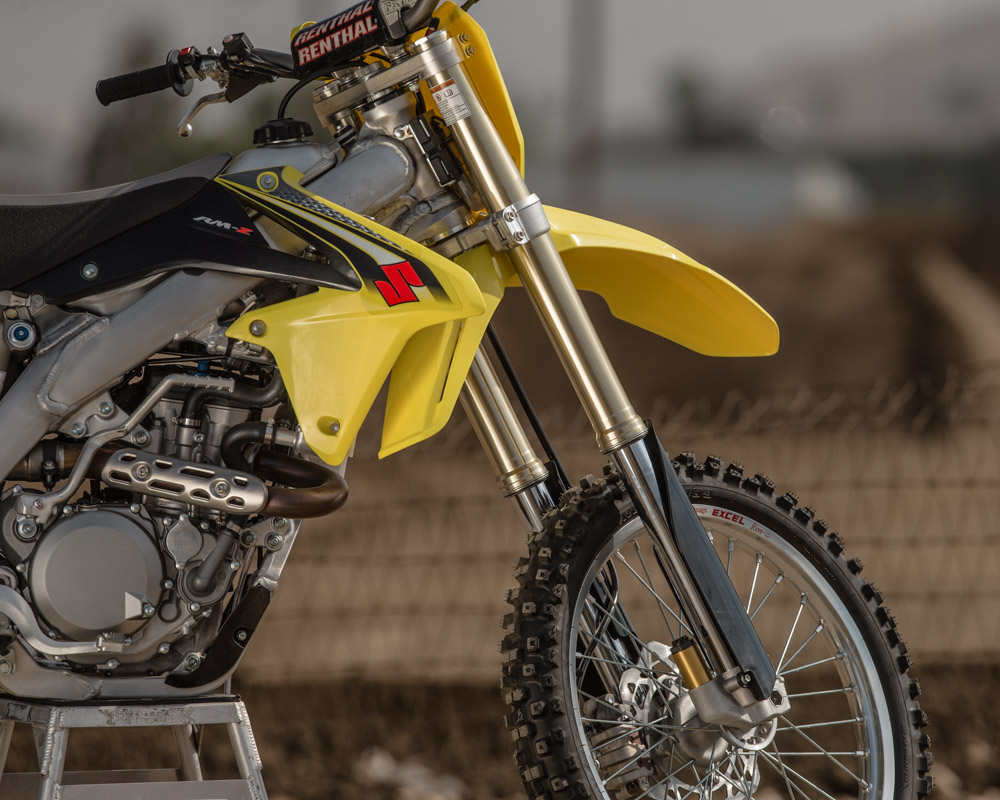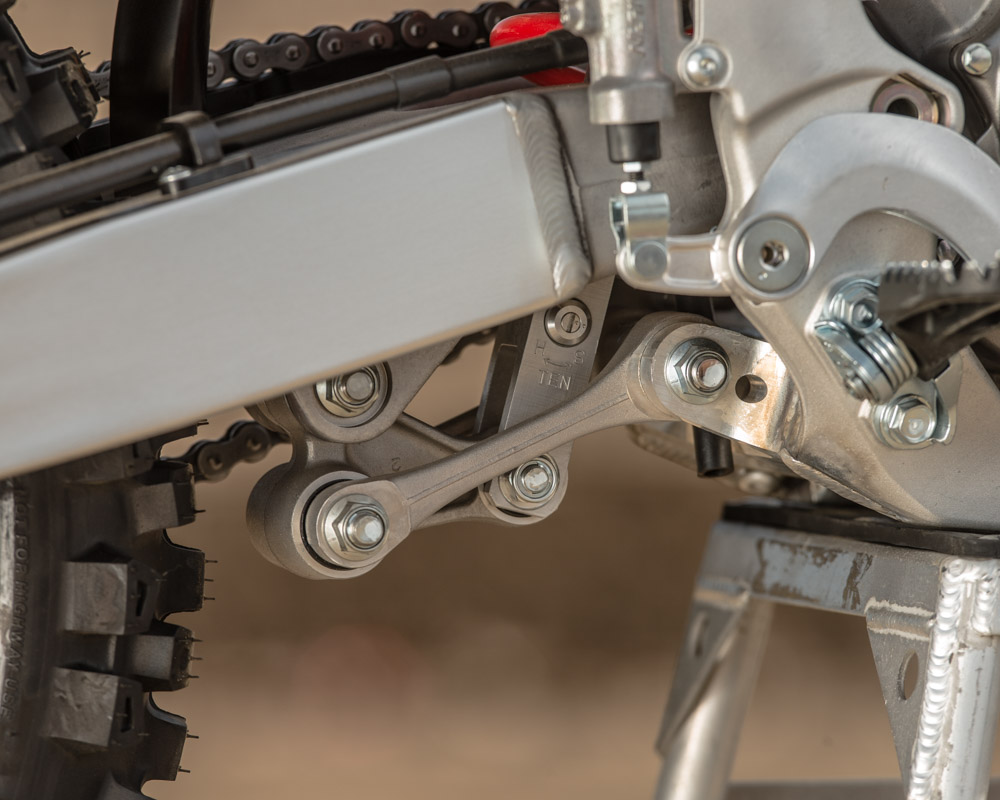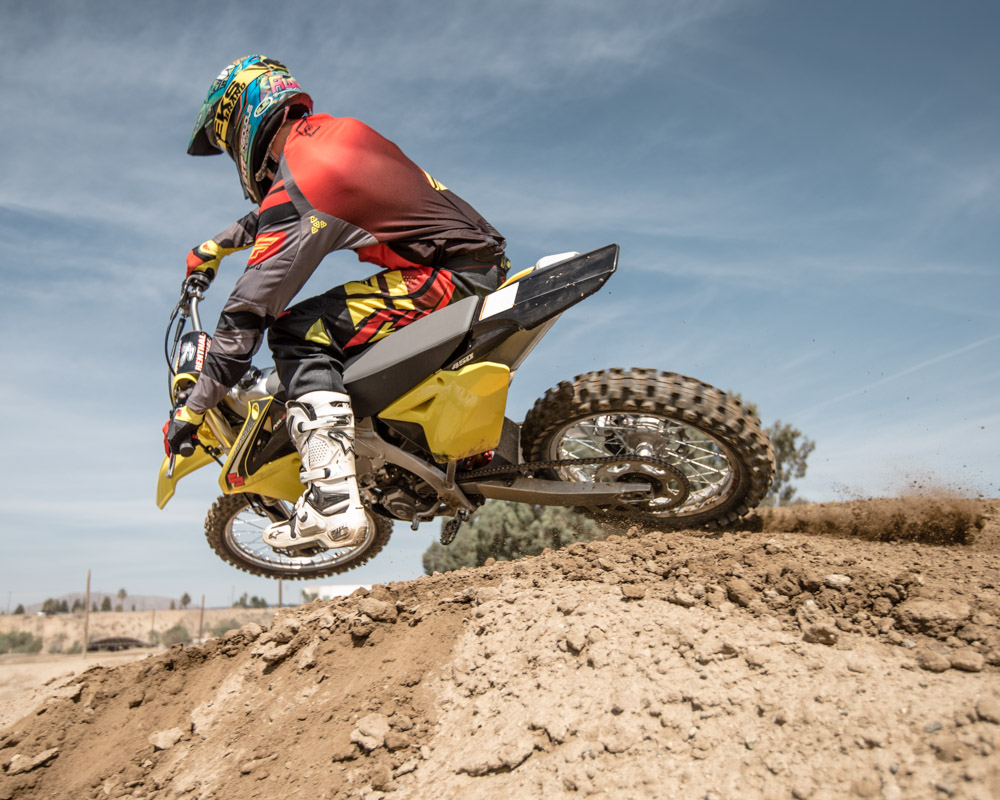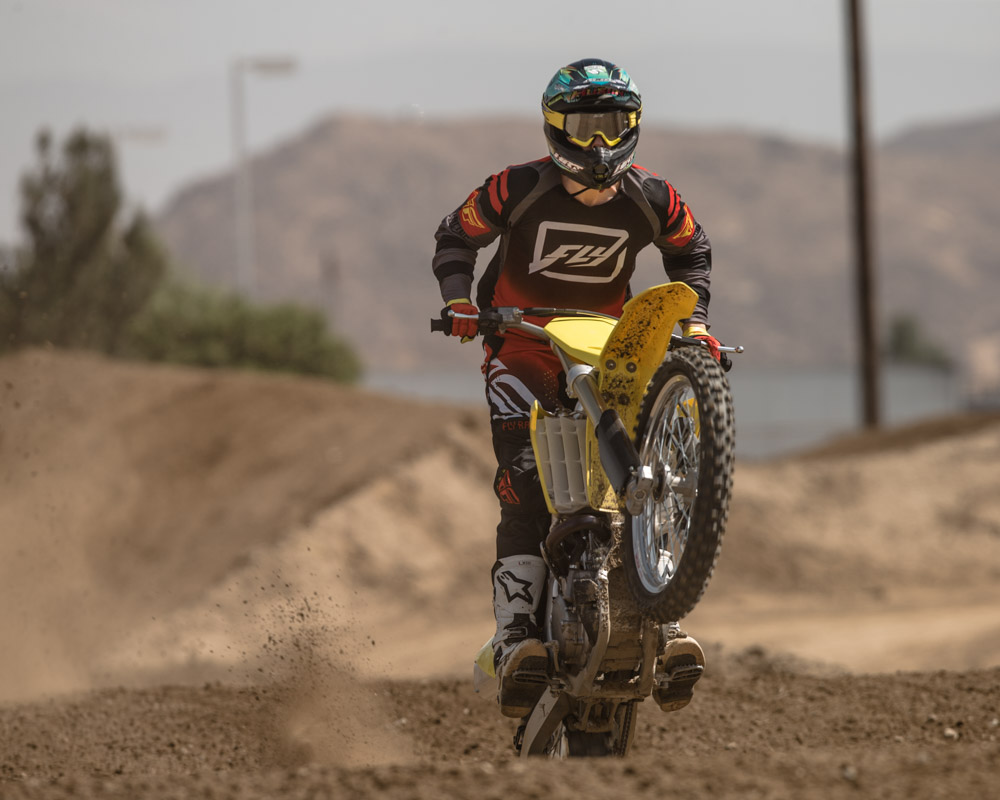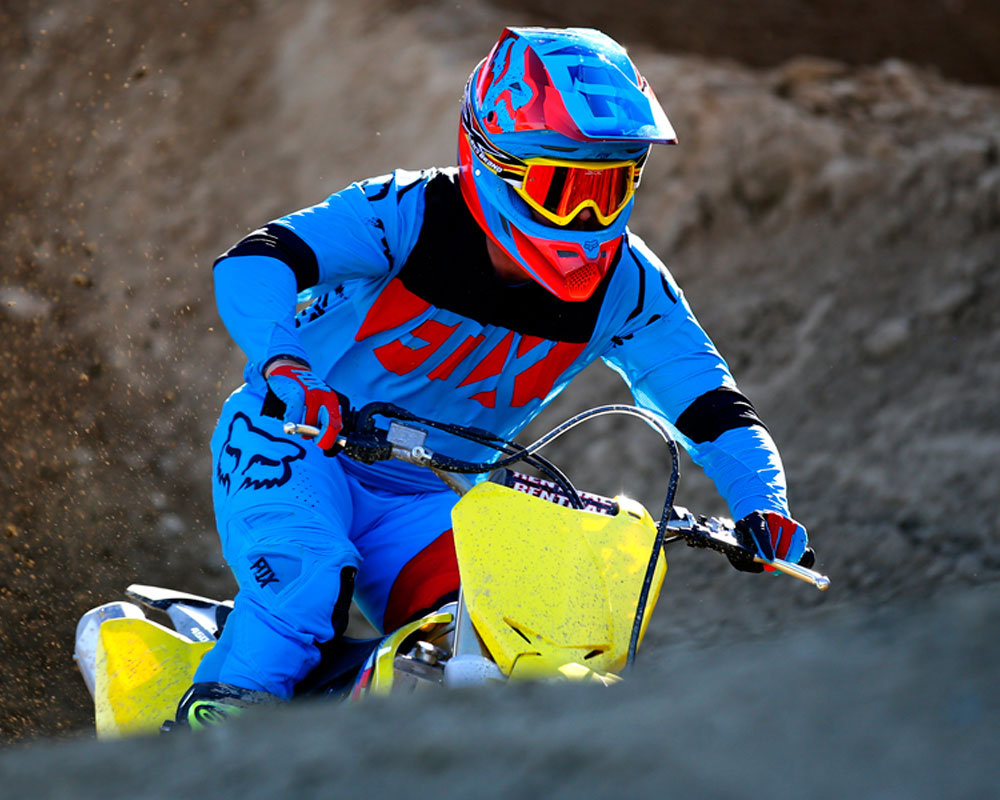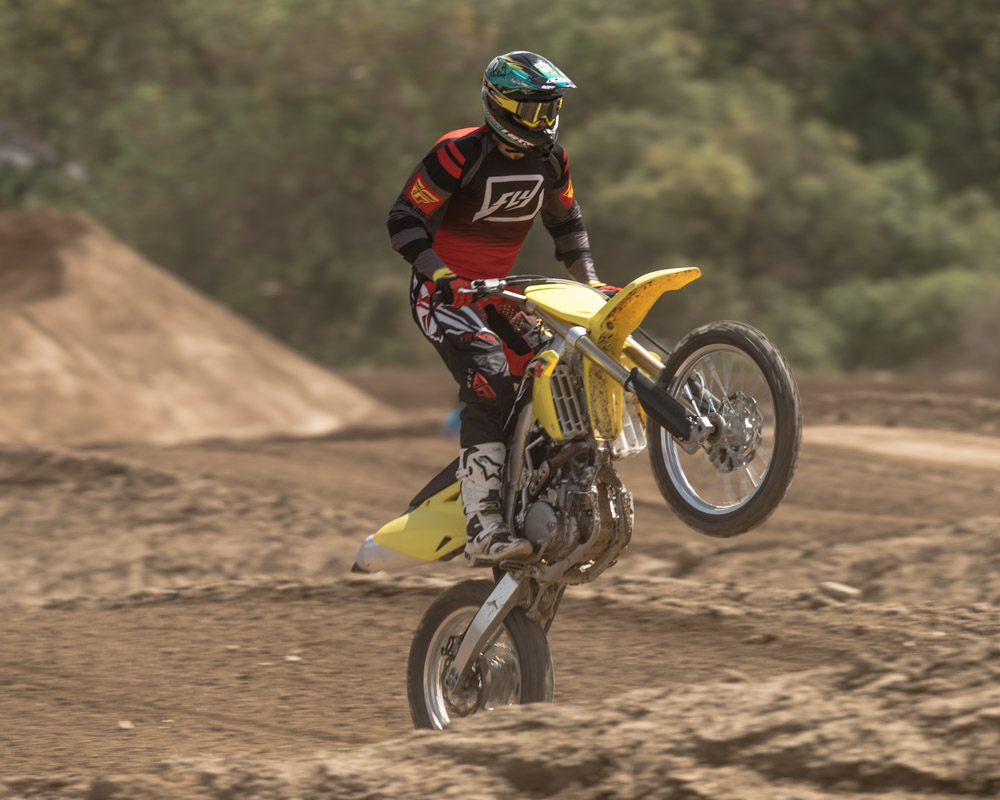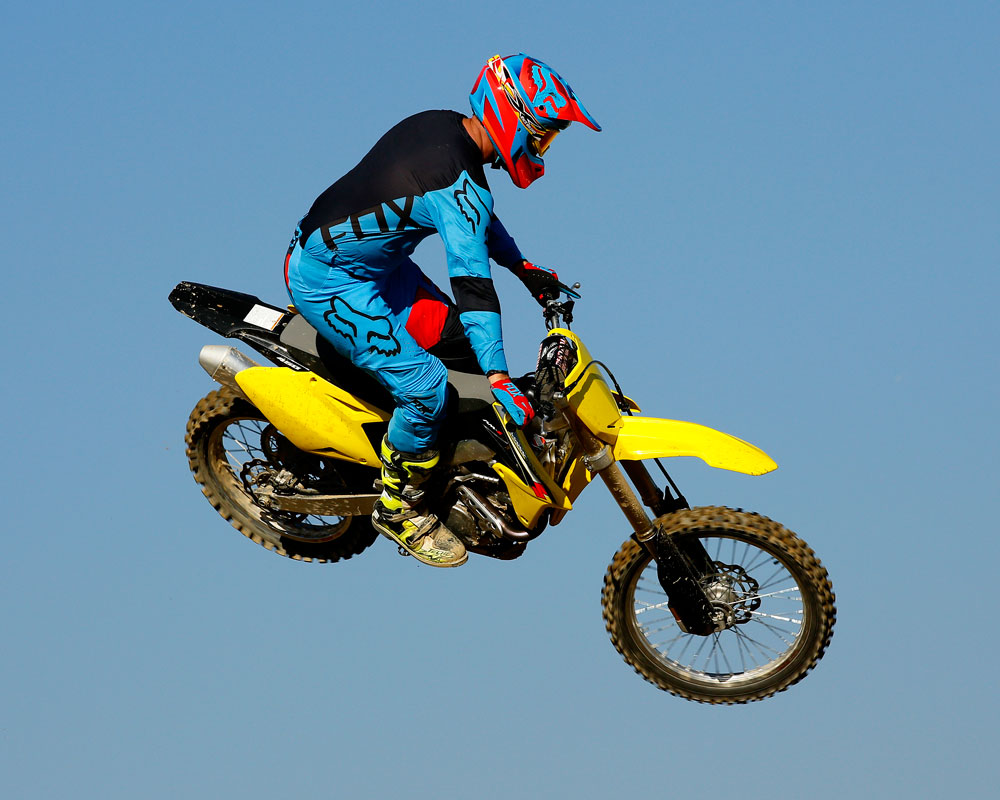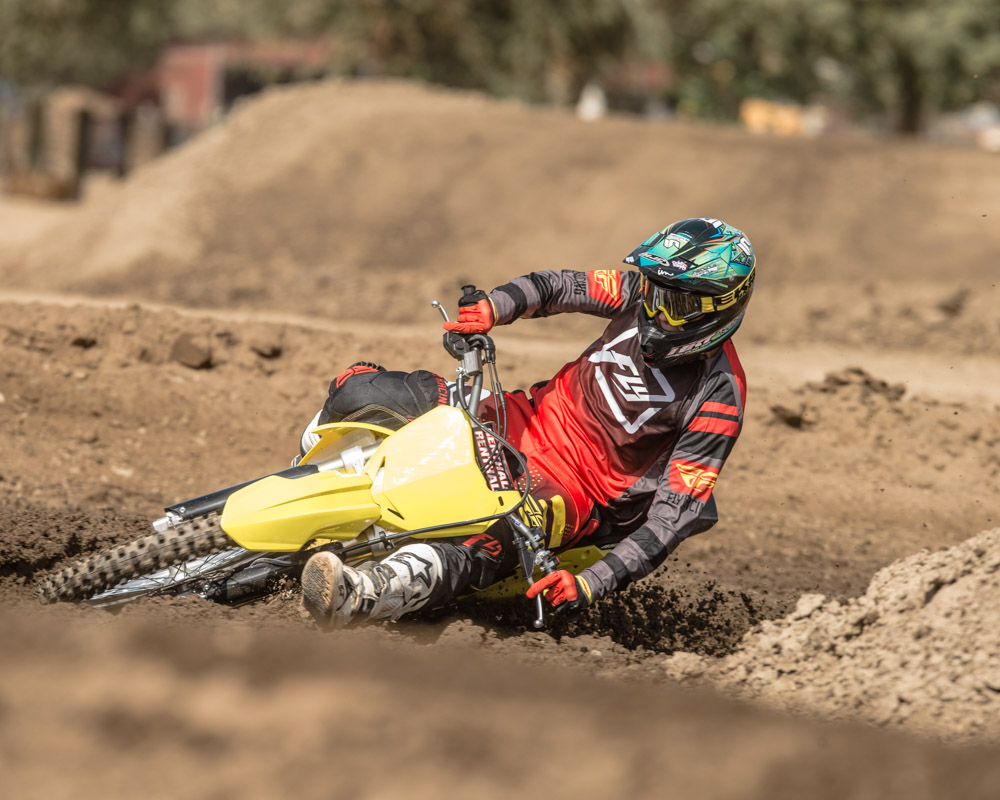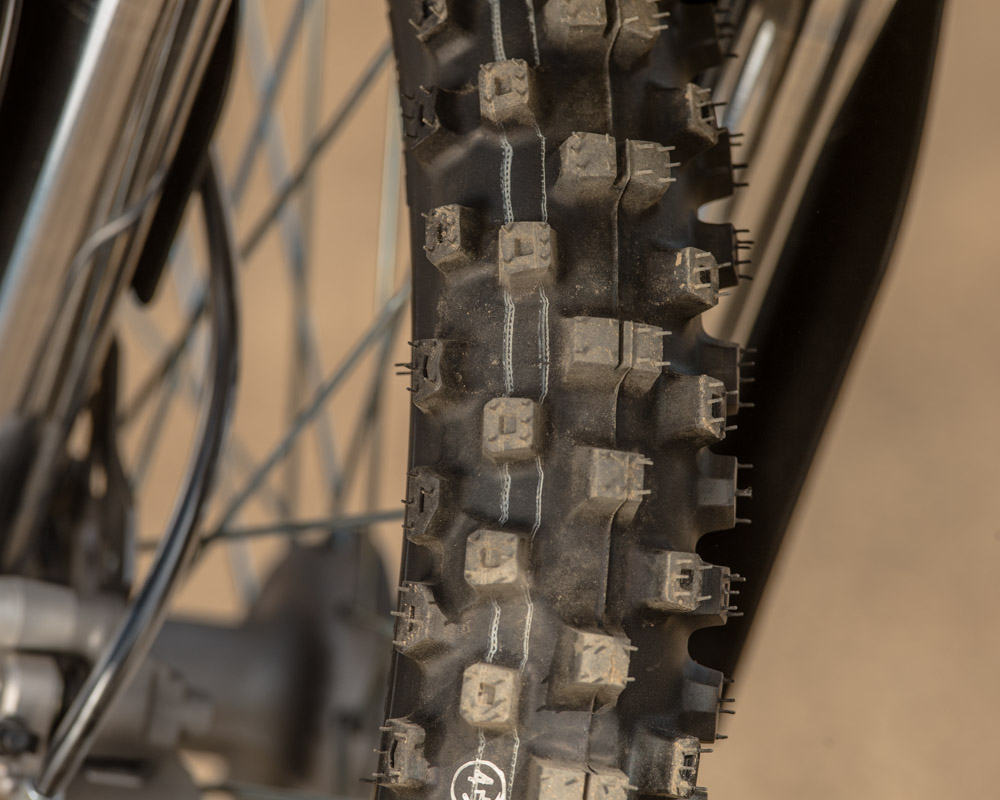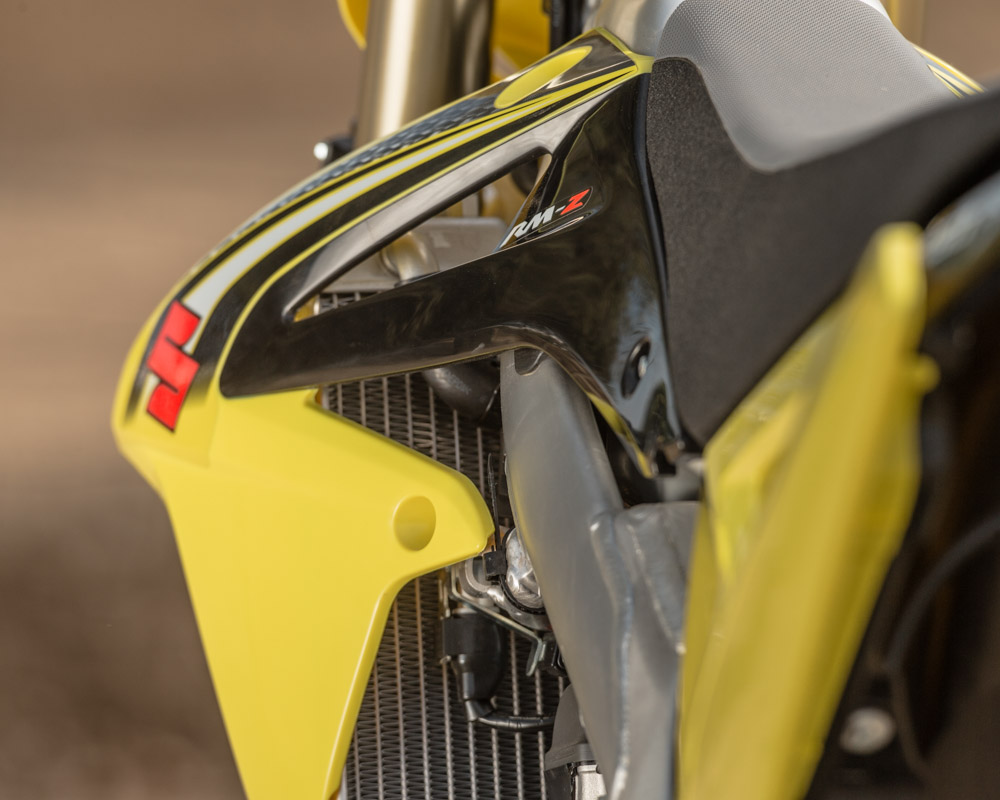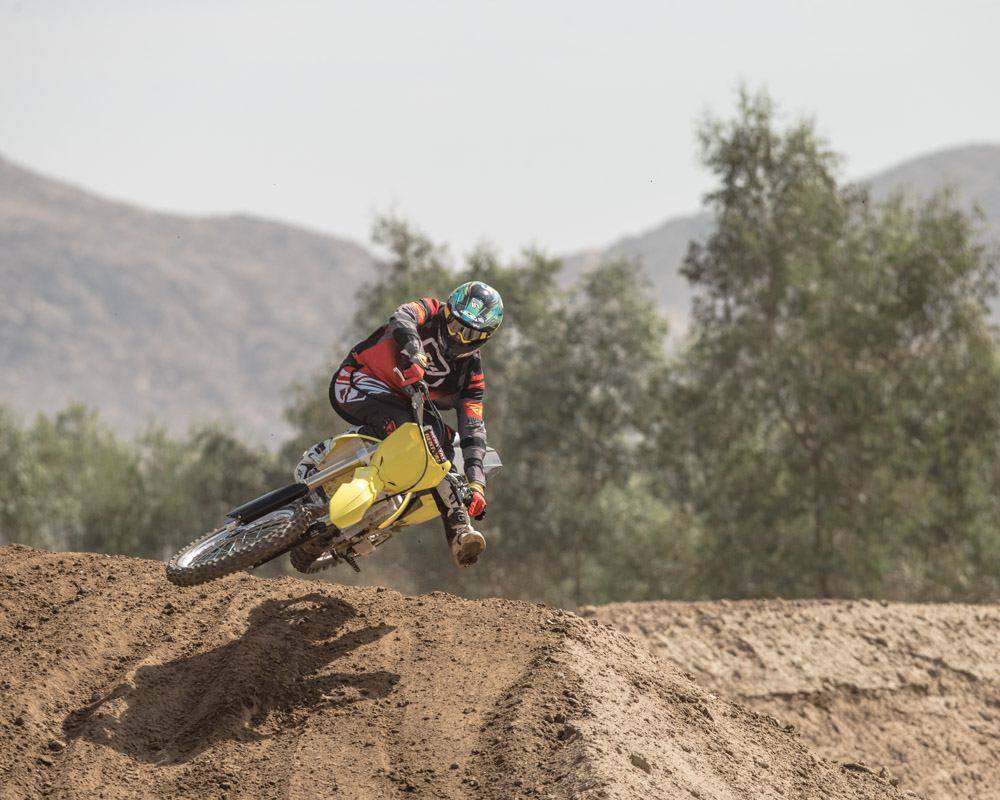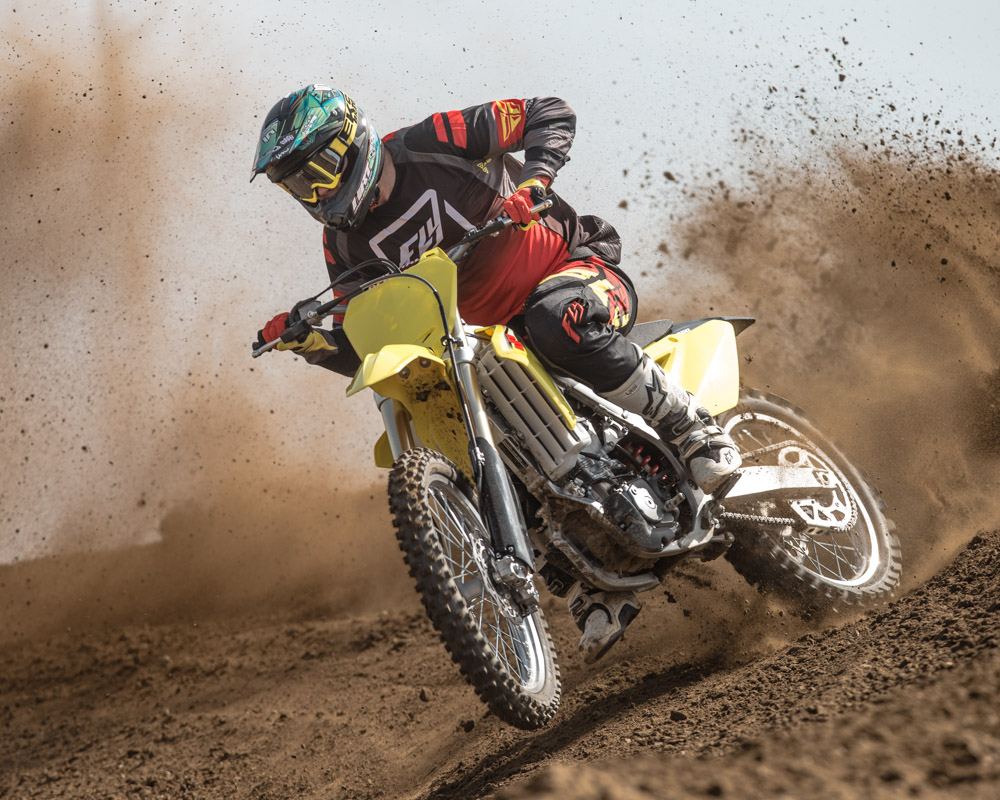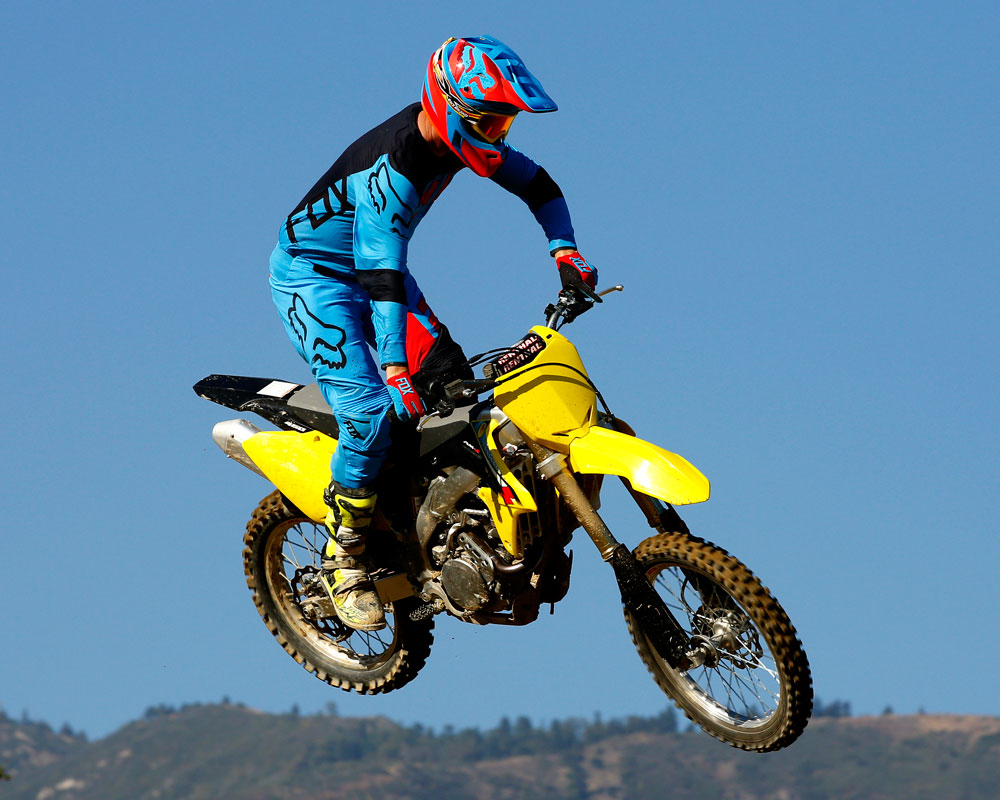2016 Suzuki RM-Z450 Test
On The 24-Month Plan
MSRP: $8,740
- When the track is smooth, the RMZ can make you feel like a hero.
- Very good engine package that is fast, manageable, and has enough bottom, mid, and top to satisfy a large group of riders
- Very accurate turning and carves flat turns with amazing accuracy when the track is smooth
- In certain conditions the bike feels like a full race bike and offers precise feedback to everything that is going on with the motorcycle.
- For racers, Suzuki has solid contingency program.
- The Suzuki has a split personality. On a smooth track you feel like a hero, when the track gets rough the bike makes you feel like a chump
- The frame feels too stiff and you feel every square-edge bump in the track when rough through the handlebar and footpegs
- Was not able to find a fork setting that took the sting out of the front end without causing bottoming everywhere
- After a few hours you could hear a few rattles from levers and
Introduction
- The RMZ can have two personalities in the very same day
Rumors of a new RMZ450 did not come to light for 2016, although its baby brother got all the attention with a new 250cc machine. The 450 received the quintessential, “you are doing a great job buddy, now go back out there and kick some butt.” So if you love your 2015 RMZ450, you are going to love the 2016, and if you, yada yada yada the RMZ, you get the picture.
The RMZ has always been known for its accurate steering and ability to carve a turn better than most. The engine setup has also been updated over the years with a nice package. In 2015 the 450 was updated with the new TAC Showa SSF air fork, which is very similar to the Works units and the production fork on the KX450F, although the setup and settings are very different.
DBT did its due diligence and spent several days at different tracks with a variety of test riders at various skill levels and girth. In the end the consensus was much the same but comments fluctuated depending on the time of day they were asked.
Changes
- “you are doing a great job buddy, now go back out there and do it again.”
The list of changes is short and sweet. First a few lines in the graphics were altered and Suzuki updated the electronic launch control or start device. Ahh, yeah, that is about it for 2016.
Power
- The RMZ engine does everything it is supposed to do and does it well.
Although we had issues with chassis feel and an abundance of it, with regard to the engine and power delivery, we all embraced it. Whereas some of the other 2016 450 motocrossers we had ridden thus far, we kept messing with different fuel and ignition settings depending on the rider to achieve ideal performance. With the Suzuki, it was pretty much on point from the get-go. While older Zuk 450s often went flat on top and yearned for a longer pull and better overrev, the latest gen machines don’t have this issue. And it didn’t matter if we were racing up the huge hills at Glen Helen or a jump-filled track such as Milestone in So Cal. The engine package offers accurate throttle control from exiting corners, great pickup, and when you needed to break out the big HP, twisting the throttle a few degrees to the stop launched the bike up the hills, providing you don’t smack a square-edged bump on the way up. The engine just seems to work and work well. No, it is not the fastest or pumps out the most HP--it just seems to put out the right amount of bottom, smooth but robust transition to the mid, and a useable top and plenty of overrev.
Like many other bikes these days, Suzuki offers different plug-in couplers to quickly alter the power via a different ignition and or fuel-injection setup. Most of our testers were really happy with the stock coupler and felt the power was just as easy to manage via the throttle over going with the gray or richer/mellow power coupler. The white or leaner setup was a tad better on some tracks and helped build the power a little faster, but some riders also felt like it sometimes revved through the good parts too fast compared to the stock coupler. Testing both couplers and deciding when they need to be changed will be dictated by rider preference and possibly track conditions.
Shifting on the RMZ is pretty precise and we did not have any mis-shifts or issues unless it was rider error. The gearbox spacing was very good and for the most part there were no gaps when powering on flat ground, up big hills, or jump faces.
If you are a racer you will like the updates to the Launch Control, it seems to work very well and you can feel the difference between using it and not using it while practicing start—it works. There are times when it is an advantage and times when it isn't and that line is clear. Lots of traction, skip it.
Clutch action was not too firm or soft but the clutch did seem to fade slightly when overused, not that we should be using it much on a 450 anyways. Some have noted clutch life on the RMZ is not that long but we did not have any issues while we had the test bike in our stable.
Overall, one of the Suzuki’s strongest attributes is an excellent engine package that is void of any holes or real shortcomings
Suspension
- Depending on the time of day and setup, the fork can feel soft and firm on during any given day.
Again, Suzuki did not make any changes to the suspension or the internal valving for 2016. Last year the bike did receive the Showa TAC Showa SSF air fork. The lighter fork did change the feel of the bike, especially since the SSF coil spring fork got raked over the coals. That being said, almost any fork was going to work better—and it did. The reduction in weight did change the overall character of the bike in 2015.
Suzuki has a very different setup compared to the Kawasaki, which uses the same TAC fork for the most part, although coatings, fork lower leg thickness, and valving is much different.
Right from the get-go the fork was too soft for our photo shoot model and we had to increase the inner and balance pressure to 190lbs. Stock, the fork seemed to bottom way too easy, even for a light rider under 180lbs. Note: Suzuki does not add or recommend any pressure in the outer chamber unlike Kawasaki.
The rear shock is very finicky and does not like to ride too low in the stroke. Trying to find that good mix had us right around 102-104mm of race sag. If the rear gets low, the bike likes to dance around like someone from Burning Man that was having way too much fun, especially when the track gets hammered. We discovered this the hard way while testing at Glen Helen, needless to say we started our test at 2pm.
Once the bike was balanced the action was a lot better, especially when the track was smooth and void of big holes or square-edged bumps. The action is overall firm but we needed to keep the pressure up in the fork to avoid bottoming all over the track. When the track was smooth it still seemed to project some chassis feedback to the rider but not excessive until the track got really rough. Faster pro riders seemed to not object to this feeling as much and it seemed the harder you charged, the better the fork and overall suspension felt.
Sometimes it was difficult for some of our test riders to iron out a few suspension issues when tracks started to get rough because we were trying to determine if the sometimes harsh feedback was derived from the stiff chassis or the suspension itself. If you chased around trying to fix the square-edged-bump spike feeling, you ended up compromising bottoming control. Then when we fixed the bottoming, the rider would get bitten when the track started to get really rough.
One of the biggest issues for some riders was confidence, because the bike gives back more feedback than most, you feel more of the track under the bike. This in turn causes some riders’ internal safety monitor to flare up and ride a little more cautious. This was mostly a factor when we were riding the RMZ on the same day as other motorcycles. When we took just the RMZ to the track, riders got used to the feeling of the bike over time, yet still commented it took more energy to ride the RMZ compared to some other bikes we were testing.
Toward the end of our testing we even worked with trying Kawasaki air settings and we even raised the oil on air side of the fork by 10cc. In the end we were often back to around 190lbs in the inner and balance depending on the rider. Our heavier rider liked running 5lbs in the outer chamber and more oil in the fork, even though Suzuki calls for no air in the outer chamber. The extra oil and slight air helped bottoming and kept the fork a little higher in the stroke and allowed us to back out the compression adjuster a few clicks for some bump compliance.
On the shock, try backing out the high-speed compression to two turns out, this helps calm the rear down a little when slamming into some bumps and kickers on jump faces.
Except for having a slightly overall firm feeling and the spike when hitting square-edged bumps when the track was rough, the fork and shock work a lot better than pre-2015 models. There might be some room for improvement with personalized settings but you will still be fighting a very firm chassis regardless.
Chassis - Handling
- The RMZ can make you feel like a hero and a zero on the same day
This section could be written in two different parts. Part one when a track is smooth and/or early in the day, part two is when the track gets rough or beat up. This bike is like Dr. Jekyll and Mr. Hyde, although a little more predictable. The RMZ turns on a dime, has pinpoint accurate handling, and can make you feel like you are flying on the track—then some of that confidence gets depleted as the day progresses. It is amazing how well this bike works when a track is smooth or with smaller bumps compared to when the tracks gets rough. At Glen Helen, when riding the bike late in the afternoon when the track is beat, some of us had brief 1997 CR250R flashbacks.
In our opinion, the chassis is too stiff and generates a lot of feedback to the rider, often through the handlebar as well as the footpegs. This is good when the track is smooth but can wreck a rider’s confidence when a track is very rough or littered with square-edged bumps and kickers on jump faces. This was mostly realized when we rode the RMZ back to back with other test bikes. When the RMZ was the sole bike ridden on a particular day, that sensation is subdued but you still know it’s there. We spent a lot of time chasing suspension settings to realize the firm chassis is often the root of the firm feel.
The bike is balanced and has a good feel for the most part but we would almost consider this setup old school now considering Kawasaki has an all-new chassis. Although the bike has amazing turning ability, it feels like it carries the weight a little higher compared to some of the bikes currently offered. Again, not as noticeable until you ride other bikes back to back.
Other than the firm frame, the chassis is well received in the early parts of the day according to rider feedback. It also seemed like the harder you charged or more energy you put into your riding, the better the bike worked. This explains why a lot of fast riders have liked this chassis. Yet for the average rider, some said they got slightly more fatigued on the RMZ in rougher conditions, mostly because they felt they had to hold on a little tighter because they felt the bike moved around and sometimes gave more feedback through the handlebar than desired. Over time and the more you ride it, the more you get used to the sensation and expect the feedback but it can still be unnerving in some situations. Then when the bike starts to move around and kick, the rider backs off and this can also make the sensation worse. And in softer dirt a lot of our complaints are mute points as well since the dirt softens the blow and the chassis stiffness keep the bike pointed straight when you are on the power.
The brakes are good on the RMZ but not great since most of the "other" bikes have stepped up for 2016. Overall the build quality is solid but we have never been a huge fan of some of the fastener selections, especially after the hours start to climb on the RMZ.
If we spent a season on an RMZ, the use of some sort of bar dampening system such as a Flexx Bar, Xtrig bar mount, or Neken SFS air clamps might help. Of note is the use of Bridgestone 403/404 tires and the grip and stick was applauded by all riders. But another angle to tuning the chassis may be in a softer sidewall tire like the new Michelin Starcross 5.
The overall chassis can be very good and not so good in the same breath. For some it takes more energy to ride the RMZ and some riders that spent limited time on the bike did not have much confidence to charge sections because of the firm chassis and feedback.
Conclusion
- The RMZ can be amazing and not so amazing on a given day.
To sum it all up, the 2016 RMZ450 can be one of those acquired tastes. Some like the pro-bike feel, others do not. The RMZ can be amazing as well as harsh as a cheap shot of whiskey on the very same day. The engine is strong and will not light the world on fire but does nothing wrong—it just works very well. The suspension might be held back because of the chassis, especially since the very similar fork on the KX450F works so much better on that bike compared to the Suzuki. Yet on the other hand the handling has pinpoint accuracy and turns without effort. This is why you can be so torn while riding the RM-Z450. It does so many things so well but it can turn on you when the track gets beat. Take it or leave it? That is the question. Does the good outweigh the not as good and can you learn to ride though its shortcomings?
Recent Product Tests
What Others Said

http://www.dirtrider.com/2016-suzuki-rm-z450-first-impression

http://www.motoonline.com.au/2015/08/21/review-2016-suzuki-rm-z450/

http://www.cyclenews.com/354/36253/Racing-Article/First-Ride--2016-Suzuki-RM-Z450.aspx
Rider Opinions
Leave a Reply
